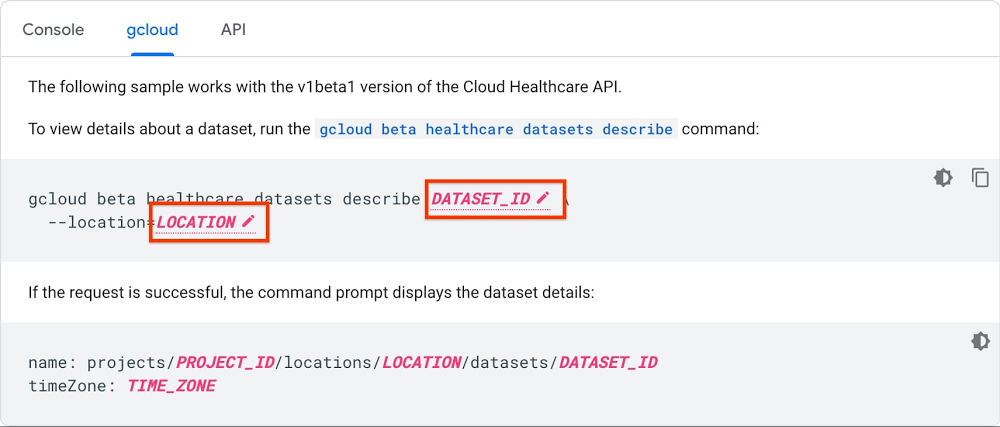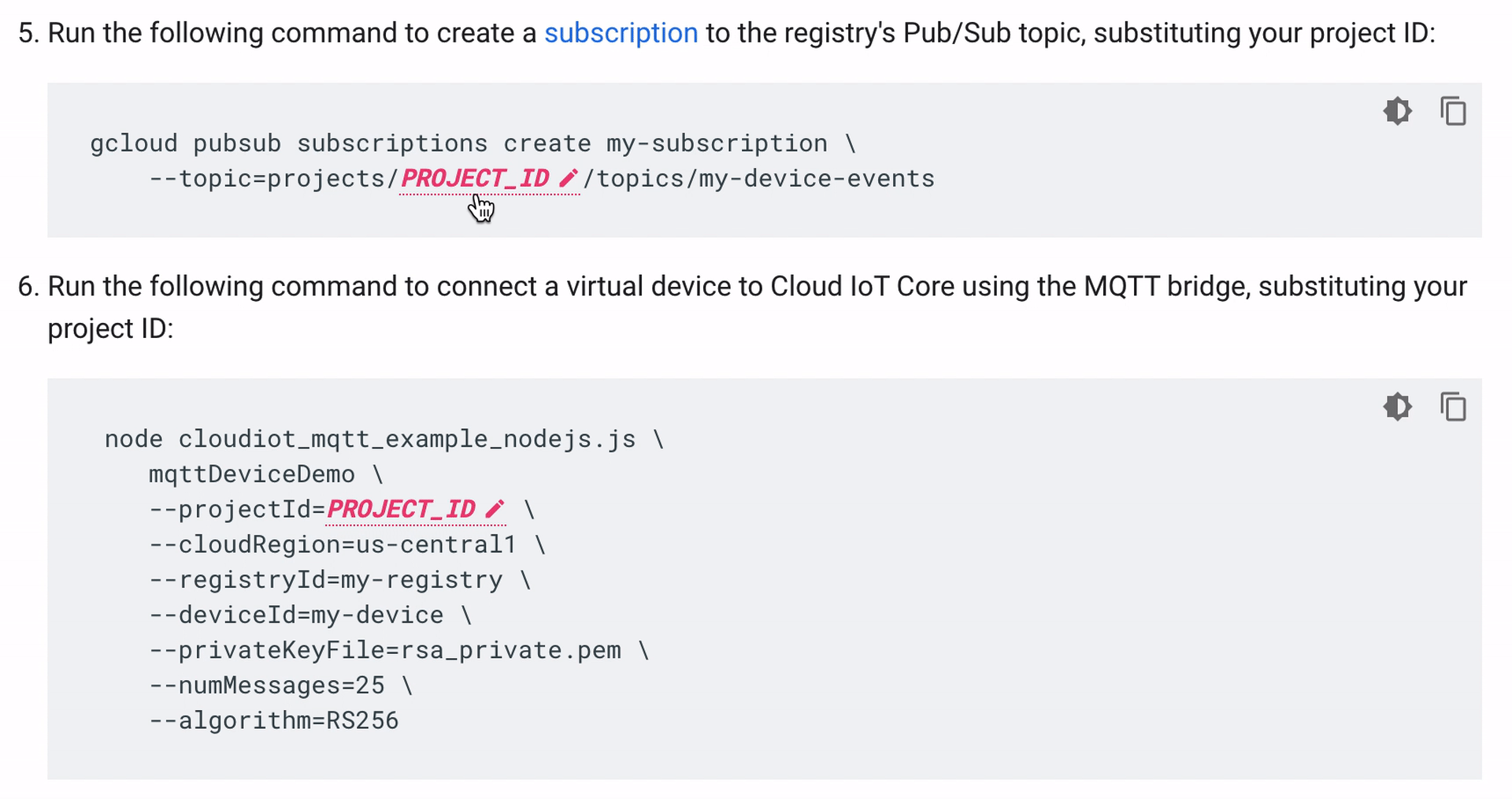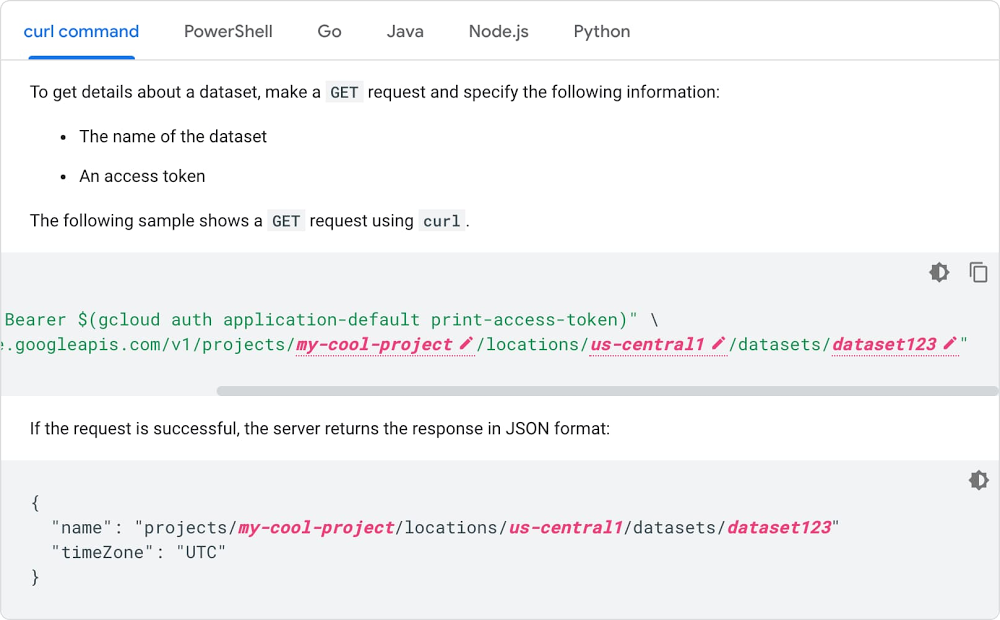Vox explains efficacy rates and why the best vaccine is the one you get now:
Tags: coronavirus, vaccine, Vox
Vox explains efficacy rates and why the best vaccine is the one you get now:
Tags: coronavirus, vaccine, Vox
Many states use color to represent levels of Covid-19 and/or county restrictions. The color scales states use vary across the country. For The New York Times, Caity Weaver details the usage and the challenges of picking meaningful scales.
Tags: Caity Weaver, color, coronavirus, New York Times
For NYT Opinion, Charlie Warzel and Stuart A. Thompson returned to the topic of location data logged by our mobile phones. This time though, they turned their attention to the United States Capitol on January 6, 2021:
The data we were given showed what some in the tech industry might call a God-view vantage of that dark day. It included about 100,000 location pings for thousands of smartphones, revealing around 130 devices inside the Capitol exactly when Trump supporters were storming the building. Times Opinion is only publishing the names of people who gave their permission to be quoted in this article.
As the animation plays out, you can clearly see the dots cluster around the rally area and then make their way to the Capitol building.
This surveillance stuff through consumer data (which companies can buy) seems way too easy.
Tags: insurrection, mobile, New York Times, privacy
Not-a-bad-deal visualized. The Democrats negotiated a lot of support in there for low-income and Native populations. Trump also got $1.4bn for his wall.
These days, most of us don’t have to do much to turn on a light when it’s dark out. But what if I told you it used to take a lot more time and money to get that sweet artificial light? For The Pudding, Ilia Blinderman and Jan Diehm equate scrolling down one pixel to one second for an average waged worker. See how much you have to scroll/work to earn one hour of light.
The New York Times reconstructed the night. Based on a collection of court documents, ballistics reports, body camera footage, and interviews, they built a 3-D model of the scene depicting what appears to be an unorganized and unexpected raid.

Image © Zach Cooley, shared with permission
Utah is full of strange occurrences these days: first, the mysterious monolith popped up in a remote region of the Southwestern state, and now, the moon was caught peering over its landscape in an act of supernal surveillance.
During Halloween weekend, Phoenix-based photographer Zach Cooley traveled to Arches National Park in Moab, Utah, and staked a spot near this sandstone arch that dates back millions of years. The location wasn’t just a good guess—Cooley relied on three smartphone apps to position himself in the right place at the right time. When the moon passed by the opening, he snapped the incredible juxtaposition, revealing a massive eye embedded in the rocky landscape. The fortuitous photograph subsequently was named NASA’s Photo of the Day, which then mused: “Who’s watching whom?”
For more of Cooley’s moon-chasing escapades, check out his Instagram, and pick up a print on his site. (via This Isn’t Happiness)
Japanese artist Yasuhiro Suzuki long has wondered about what lies beneath the surface of Tokyo’s Sumida River, a question he’s symbolically remedied with a sleek vessel that unzips the middle of the waterway. Suzuki’s “Zip-Fastener Ship” mimics the ubiquitous closures as it separates the central river with a wake that splays out just like the teeth-lined tape.
Completed in 2004, the silver vessel grew out of an idea Suzuki had in 2002 after he watched a ship glide down the waterway while flying overhead. “The undertow of the boat, which travels back and forth between Azuma-bashi Bridge and Sakura-bashi Bridge, opened up the water like a zipper to connect the other side of the river,” he says. “(I hoped) that it would change the way we look at the city landscape.”
Suzuki began an annual launch on the Sumida in 2018 and plans to shift his focus to the water’s molecules in a future iteration, which you can follow on Instagram. (via Laughing Squid)






This morning, my friend Tamás dropped this tweet into the #internet channel of the XOXO Slack, a place where we talk about weird and good internet.
i need to know the fucking story here pic.twitter.com/7sxT9vfyKA
— dog star (@rats_god) October 16, 2020
Never one to turn down an inconsequential quest, I did a deep-dive through Google’s fragmented late-1990s Usenet archives to see if I could piece it together. What caused such a specific group to be created?
It ended up being an interesting microcosm exploring three approaches to community moderation: hands-off moderation, majority rule, and strong moderation.
The original charter for the alt.binaries.images.underwater newsgroup was extremely wholesome:
The theme or Topic of this newsgroup shall be images portraying “an underwater scene.” Only photographs, paintings, and graphics whose primary subject is shown in an underwater setting are “on topic” in alt.binaries.images.underwater. Its title’s broadness is deliberate, and indicates inclusion of a varied range of UW themes and imagery. Some examples: shipwrecks, non-human sea life (i.e. fish & coral), swimmers & divers (scuba, snorkelers, free-divers, mermaids, pearl-divers, “hard-hat” divers). The setting may be an ocean, river, lake, or swimming pool… as long as the picture’s primary subject is seen underwater, the image is on-topic.
The setting may be an ocean, river, lake, or swimming pool… as long as the picture’s primary subject is seen underwater, the image is on-topic.
Certain “surface scenes” shall be considered acceptable *if* the image’s subject is seen *semi-submerged* (meaning more in-the-water than out of it. Some examples: a surface view of a semi-submerged shipwreck, or divers/snorkelers floating beside their boat or a buoy.
It was designed to be G-rated and family-friendly, placed outside the alt.binaries.pictures.erotica.* hierarchy, and with no mentions of sex, nudity, or fetishes. Its creator chose to use “images” in the name instead of “pictures,” to distance from alt.binaries.pictures.* and because he felt it “conveys a classier feel.”

Pornography was never explicitly forbidden, and artistic nudity was explicitly allowed, which created a slippery slope. The creator’s hopes for tacitly allowing it were almost hilariously naive. In a FAQ from 1998, he wrote, “Underwater pornography is actually rather scarce, and I do not think it will be as much of a problem here as James suspects… I think that most of the nudity which will (inevitably) show up in a.b.i.u. will be tasteful, and beautiful.”
Quickly, it’s clear from old threads that NSFW photos came to dominate the group, even though it was never intended for that purpose.
And there were other types of images that were technically underwater, but veered far from the group charter: images of shark attacks, drownings, bondage, and children and underage models.
After being taken to task for deciding a moderation guideline against bondage imagery unilaterally, the group’s creator/admin decided to allow policies to be determined entirely by majority rule.
As a result, four new rules were added, passed by a 70% margin:
The banned-in-ABIU subjects are:
(1) shark attacks and victims, etc.
(2) portrayals of drownings & drowning victims
(3) portrayals of UW bondage (tied-up/chained, or otherwise “bound” people)
(4) pictures of naked (or clothed) children or legally underage models (US Law)
Beyond here, the history gets muddy. It’s clear that these rules weren’t taken kindly to some of the active members of the group.
A splinter group, free.underwater, was created with absolutely no rules. (I’m only able to piece this history together because of cross-postings to that group and others like rec.scuba, since Google doesn’t host archives of the alt.binaries.* groups.)
From other postings in scuba enthusiast groups, it’s clear that the reputation of alt.binaries.images.underwater was irreparably damaged: through lax moderation, it was dominated by NSFW photos, and the accompanying porn spam ads that come with it, with little else of value.
By August 1999, the group’s original creator decided he’d had enough of his wholesome underwater photography newsgroup being flooded with porn and spam, and banned it entirely from alt.binaries.images.underwater.
He created a second newsgroup solely for NSFW (but non-violent!) underwater photos, the unwieldy alt.binaries.images.underwater.non-violent.moderated, named to indicate content disallowed by moderators, but neglecting to mention that NSFW images were allowed. The newsgroup’s one-line description only reads, “No death/drownings/bondage (Moderated).”
In a post to rec.scuba from October 1999, he proudly advertised that alt.binaries.images.underwater had changed.
Its binding original G-rated scuba-oriented Charter rules are being enforced. It is ready for you scuba fans to come and fill it with your G-rated UW photos. As its creator/admin, I’ll actively help you keep the spam and sex stuff out.
Back on Aug. 30th, a new Moderated newsgroup was created for the fans of underwater erotica (nudes & sex), and they have left. ABIU is now the place for family-safe UW pics.
How well did this approach work? Hard to say definitively, since neither group was archived by Google Groups.
But judging from a search of mentions on rec.scuba, it seems like alt.binaries.images.underwater once again became a place recommended by enthusiasts to find and post underwater photography, like its creator originally hoped.
There’s virtually no mention of alt.binaries.images.underwater.non-violent.moderated again, leading me to believe that it quietly died as people shifted to other unmoderated Usenet groups, as well as web-based forums, P2P file sharing, and later, communities like Reddit.
Have an internet mystery or inconsequential quest you want solved? My inbox and DMs are always open.
With each model update, FiveThirtyEight runs 40,000 simulations, or what-ifs, to calculate the odds for who will win the election. Their new interactive lets you experiment with all of the what-ifs to see how the odds shift when a candidate wins a state.
It answers the question, “If ______ wins in ______ and in ______, etc., what are the chances of him winning the whole thing?”
So if Trump wins a very red state or Biden wins a very blue state, the overall odds don’t change that much. But if a very red goes blue, or a very blue goes red, then the odds swing dramatically.
There’s a good lesson on conditional probability somewhere in there.
Tags: election, FiveThirtyEight, simulation

 As a Solutions Engineer at Percona, one of my responsibilities is to support our customers as they investigate new and emerging technologies. This affords me the opportunity to speak to many current and new customers who partner with Percona. The topic of Kubernetes is becoming more popular as companies are investigating and adopting this technology. The issue most companies are encountering is architecting a stateful database that doesn’t fall victim to an environment tuned for ephemeral workloads. This obviously introduces a level of complexity as to how to run a stateful database in an inherently stateless world, as databases are not natively designed for that.
As a Solutions Engineer at Percona, one of my responsibilities is to support our customers as they investigate new and emerging technologies. This affords me the opportunity to speak to many current and new customers who partner with Percona. The topic of Kubernetes is becoming more popular as companies are investigating and adopting this technology. The issue most companies are encountering is architecting a stateful database that doesn’t fall victim to an environment tuned for ephemeral workloads. This obviously introduces a level of complexity as to how to run a stateful database in an inherently stateless world, as databases are not natively designed for that.
To make your life easier, as a part of the Percona Cloud-Native Autonomous Database Initiative, our engineering teams have built two Kubernetes Operators: Percona Kubernetes Operator for Percona XtraDB Cluster and Percona Kubernetes Operator for Percona Server for MongoDB, which allows for Kubernetes Pods to be destroyed, moved, or created with no impact to the application. To see an overview of Kubernetes, you can read this previous blog of mine Introduction to Percona Kubernetes Operator for Percona XtraDB Cluster that covers this topic. It’s common for companies new to Kubernetes to attempt to run their databases in Kubernetes the same way they would in a traditional environment. But, this is not advised as it introduces the possibility of data loss and it is not recommended for production workloads. Why is this dangerous and how has Percona solved this?
Kubernetes is not the answer for everyone. It’s even not the answer for most people. Do not be misled into thinking that moving a database into Kubernetes is going to solve any of your problems. Before you consider moving your database into Kubernetes, ensure the rest of your application is cloud-native and can be used with Kubernetes. Moving your database to Kubernetes should happen after you have started both elastic vertical and horizontal scale and need to orchestrate it to control costs.
As more companies are moving to Kubernetes something has to happen to the legacy workloads. Oftentimes we see a lift and shift mentality into Kubernetes, which can be dangerous or cause more work than expected. We have seen two primary ideal use cases for moving database workloads to Kubernetes: Microservices and Unified Abstraction Layer.
Monolithic, large datasets can prohibit some of Kubernetes’ strong points: self-healing and availability. This can be an issue due to the time it takes to physically transmit data to a new Pod instance as it joins the database cluster. If your dataset is too large, this process is slow due to physical limitations and prohibits performance and the availability of your database. Microservices are a great fit due to the relatively smaller datasets, which allows Kubernetes automation to work well with the dataset size.
Companies looking to take full advantage of cloud-native applications and databases can be a really good fit for Kubernetes as well. If you truly want the ability to deploy and run your databases anywhere utilizing the concept of a Unified Abstraction Layer, Kubernetes is a great option. You can move your databases to anywhere that is running Kubernetes and know it will work.
We talked about large unsharded datasets and the limitations Kubernetes presents when handling them, but we should mention a few more workloads better suited for traditional platforms. Applications with a throughput sensitivity may not do well on Kubernetes, or they may not be cost-effective to do so. Kubernetes is fundamentally designed for container orchestration and is not designed to handle highly performant databases that require low latency. This may be possible to achieve, but at what cost? This applies to highly performant distributed applications as well. Lowest latency across all nodes is not a core tenant of Kubernetes, so ensure you have planned and tested against this before you move everything over to Kubernetes.
If you’re not familiar with Pets vs Cattle, it’s a DevOps concept that differentiates deployment methodologies of unique servers that require attention when issues arise (pets) versus the ability to replace a server with a copy if issues arise (cattle). Due to the nature of how Kubernetes operates, Pods can be destroyed, spun up, and moved at any time due to factors outside of the application’s control, much like how cattle are treated. Kubernetes uses a scheduler, which by design, can destroy and recreate Pods to meet the configuration needs of your Kubernetes Cluster. This is great for stateless applications as any failure in the application will result in a Pod containing the application being destroyed and recreated, eliminating the need for human interaction, and greatly speeding up the process to a resolution. This isn’t ideal for databases as you don’t want your database to suddenly stop working, halt the application, and introduce the potential for lost or corrupted data. One of the tools Kubernetes can utilize to help combat this is called Stateful Sets. These help by keeping a Pod’s identity assigned to it as it is destroyed and re-created. This helps facilitate stateful workloads, but how does this come into play with high availability and utilizing the automation aspects of Kubernetes?
Databases by design need to keep their identity, information, and most importantly their data safe and accessible at all times. They are the backbones of the application as they are the source of truth an application relies on for normal processing. Any errors in their operations will quickly stop an application from functioning. They are important, to say the least. How can we safely run databases in Kubernetes and still ensure we have highly available database deployments? By using Stateful Sets and Persistent Volumes we can maintain data integrity, but we need an additional set of hands to take on database administrator tasks such as ensuring failover happens, database members are recovered, and re-join the highly available architecture, along with other technology-specific functions. Fortunately, Kubernetes is extensible and has Operators, which aims to automate the key task of a human operator who is managing a service or set of services.
We know the complexities of running a database (safely) in Kubernetes and some of the concepts used to help bridge the gaps between automation and traditional human functions. With the help of Percona’s Kubernetes Operators, we can safely run databases the way they were intended to run. Percona’s Kubernetes Operators are able to automate tasks that are usually done by a database administrator such as:
With the complexities of running a highly available database environment and the inherent dangers introduced by using the dynamic Kubernetes environment, an Operator should always be used when deploying databases in Kubernetes. Fortunately, Percona has already solved this by providing Percona Kubernetes Operator for Percona XtraDB Cluster and Percona Kubernetes Operator for Percona Server for MongoDB. Percona provides full support for databases running in Kubernetes with the Percona Operators. If you are interested in learning more or obtaining support or professional services to maximize your database deployments, please reach out to us.
 Lyft has announced that Lyft Pink members will automatically get a free Grubhub+ membership (or Seamless+ if you live in New York City). Grubhub+ usually costs $9.99 a month and includes:
Lyft has announced that Lyft Pink members will automatically get a free Grubhub+ membership (or Seamless+ if you live in New York City). Grubhub+ usually costs $9.99 a month and includes:
This is notable because Lyft Pink (reg. $199 a year) is included free with the popular Chase Sapphire Reserve card. This adds another potentially valuable perk to offset that high annual fee.
Receive up to 15% off car rides, plus other benefits, such as priority airport pickups, relaxed cancellations, and exclusive saving opportunities with one year of complimentary Lyft Pink, a $199 minimum value, when you or your authorized user activates with a Sapphire Reserve card by March 31, 2022. Lyft Pink will be registered in the name of the cardmember who first activates the benefits.
If you have not joined Grubhub yet, you can get $10 off your first Grubhub order of $15+ if you join via my referral link. I will get food credits as well. Thanks if you use it!
If you already have both Lyft Pink and Grubhub accounts, link them together and activate here.
The Chase Sapphire Reserve also gives a free year of Dashpass membership (free delivery on DoorDash) along with $60 in statement credits on DoorDash food purchases ($60 in 2020 and $60 in 2021). If you are new customer to DoorDash and sign up via my DoorDash referral link, you will get $10 off your first 3 DoorDash orders over $20 ($30 total savings). I will get food credits as well. Thanks if you use it!
Free Grubhub+ Membership with Lyft Pink (Chase Sapphire Reserve), $10 Off First Order from My Money Blog.
Copyright © 2019 MyMoneyBlog.com. All Rights Reserved. Do not re-syndicate without permission.
HsiufanI worked on this!
While there are a variety of reasons to export data out of your databases—such as to maintain backups, meet regulatory data retention policies, or feed downstream analytics—exports can put undue strain on your production systems, making them challenging to schedule and manage. To eliminate that resource strain, we’ve launched a new feature for Cloud SQL: serverless exports. Serverless exports enables you to export data from your MySQL and PostgreSQL database instances without any impact on performance or risk to your production workloads.
Cloud SQL exports, which offer portable data formats (SQL, CSV), can be triggered anytime and are written to Cloud Storage buckets that you control.
If you need to meet regulatory requirements around data retention, you can easily send exports to buckets with Bucket Lock enabled. Bucket Lock allows you to configure a data retention policy for a Cloud Storage bucket that governs how long objects in the bucket must be retained. It also allows you to lock the data retention policy, permanently preventing the policy from being reduced or removed.
As another example, you can export data to CSV based on a custom query, then import the data directly to BigQuery for analytics. And if this is for regular reporting, you can schedule a recurring import with Data Transfer Service or Cloud Scheduler.
Using the new serverless export feature ensures these exports won’t bog down your Cloud SQL database instance, so you can continue to run predictably and reliably. And until February 2021, you can use serverless exports at no charge.
We’re excited to see what you build with the new serverless exports feature. Have more ideas? Let us know what other features and capabilities you need with our Issue Tracker and by joining the Cloud SQL discussion group. We’re glad you’re along for the ride, and we look forward to your feedback!
The Google Cloud documentation set has a new feature that makes it easier for you to run code samples that include placeholder variables. With this new feature, you can replace the variables inline, before you even copy the snippet. When you paste the text into your editor or into the command line, the values are already set!

Placeholder variables represent custom parameter values—values in a code snippet that depend on your scenario or environment. The parameters might specify your credentials or the name of a resource.

With this new feature, you can replace the variables before copying the code sample. Edit variables in your browser, copy the command, and run it right away.
You'll often find placeholder variables in sample REST API calls and Cloud SDK commands, including the gcloud, bq, gsutil, and kubectl samples. How can you tell if a variable is editable? Look for the pencil icon and the dotted underline.

If a page has multiple code samples with the same placeholder variable, you only need to replace the variable once. For example, when you replace a PROJECT_ID variable with your own Google Cloud project ID, all instances of the PROJECT_ID variable (including in any other command line samples on the page) will use the same Google Cloud project ID.

Documentation often shows the results of an API call. For example, when we show REST API calls, we usually show sample responses from a server. The placeholder variables in the responses stay in sync with the variables in the examples.

You can make sure your REST API calls are successful by comparing the response you get with the sample. Replace the variables in the example, make the API call, and check the response at a glance.
You can find the interactive code samples throughout Google Cloud documentation. To try out the new feature, you can create a Cloud Storage bucket using the gsutil command-line tool or REST API.
The New York Times provides a breakdown of minutes spoken at the Republican National Convention. The bubbles, sized by minute count, start as an overview of everyone who spoke, and then cluster into specific groups as you scroll.
Tags: convention, New York Times, Republican, talking
Ryan Mac, reporting for BuzzFeed News:
In a companywide meeting on Thursday, Facebook CEO Mark Zuckerberg said that a militia page advocating for followers to bring weapons to an upcoming protest in Kenosha, Wisconsin, remained on the platform because of “an operational mistake.” The page and an associated event inspired widespread criticism of the company after a 17-year-old suspect allegedly shot and killed two protesters Tuesday night.
The event associated with the Kenosha Guard page, however, was flagged to Facebook at least 455 times after its creation, according to an internal report viewed by BuzzFeed News, and had been cleared by four moderators, all of whom deemed it “non-violating.” The page and event were eventually removed from the platform on Wednesday — several hours after the shooting.
“To put that number into perspective, it made up 66% of all event reports that day,” one Facebook worker wrote in the internal “Violence and Incitement Working Group” to illustrate the number of complaints the company had received about the event.
So it’s not like this event got lost in the firehose of Facebook’s massive scale. It actually dominated Facebook’s reporting mechanism.
As Mac reported separately, employees are protesting and asking Zuckerberg tough but obvious questions:
“At what point do we take responsibility for enabling hate filled bile to spread across our services?” wrote one employee. “[A]nti semitism, conspiracy, and white supremacy reeks across our services.”
The answer, apparently, is at no point. Mac’s piece concludes:
One employee who spoke with BuzzFeed News after the event was not comforted by their CEO’s words. “He seems truly incapable of taking personal responsibility for decisions and actions at Facebook,” they said.
I’m past the point where I could look past a stint at Facebook on a job applicant’s resume. Trying to get a job at a legitimate tech company after staying at Facebook through 2020 will be like trying to get a job at a legitimate news publication after a stint at Fox News.